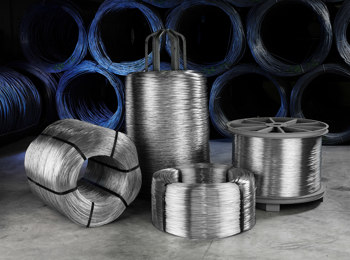សីហា . 12, 2024 16:52 Back to list
Explore Options for Gabion Wall Cladding Details to Enhance Your Outdoor Space Design
The Versatility of Gabion Wall Cladding A Sustainable Choice for Modern Landscaping
In recent years, the trend toward sustainable construction and landscaping has significantly influenced architectural choices. One such innovative and eco-friendly option gaining popularity is gabion wall cladding. This method, which involves using wire cages filled with stones or other materials, offers a unique combination of aesthetic appeal, structural stability, and environmental benefit.
What Are Gabion Walls?
Gabions, derived from the Italian word 'gabbione', meaning big cage, are wire mesh baskets filled with stones, rocks, or other materials that serve various purposes in construction and landscaping. Traditionally used in civil engineering projects to manage erosion, slope stabilization, and flood control, gabions have evolved to become a popular choice for decorative elements in outdoor settings. The cladding technique involves attaching gabion walls to existing structures, creating a blend of natural and modern designs.
Aesthetic Appeal
One of the primary reasons homeowners and architects opt for gabion wall cladding is its unique aesthetic appeal. The natural stones used can be selected to complement the surroundings, whether they’re rugged boulders or smooth river stones. Moreover, the transparency of the wire cages allows for a variety of textures and colors, making gabion walls a versatile choice for any landscaping style. Whether in a garden, a patio, or as part of a building façade, gabion walls can create striking visual interest while maintaining a connection with nature.
Structural Benefits
Beyond their beauty, gabion walls provide significant structural advantages. They are robust and durable, capable of withstanding various environmental stresses, including wind, rain, and seismic activity. The use of natural materials also allows for excellent drainage, reducing the risk of water accumulation and erosion. This feature is particularly beneficial in areas prone to heavy rainfall or flooding. Additionally, their ability to adapt to different terrains makes them an effective solution for diverse landscaping challenges.
buy gabion wall cladding detail

Sustainability
In an era where sustainability is paramount, gabion wall cladding presents an eco-friendly option. By utilizing local stones and materials, the carbon footprint associated with transportation is minimized. Moreover, gabions can be filled with recycled materials, such as crushed concrete or bricks, further enhancing their sustainable profile. As the materials used are predominantly natural, they blend seamlessly into the environment, supporting local ecosystems and wildlife.
Installation and Maintenance
The installation of gabion wall cladding is relatively straightforward compared to traditional building methods. The walls can be constructed quickly, and the process often requires minimal heavy machinery, making it less disruptive to the surrounding landscape. Maintenance is also low; regular inspections to ensure the integrity of the wire mesh and occasional cleaning are typically all that is needed. This ease of maintenance is particularly appealing for property owners seeking to minimize ongoing costs.
Conclusion
Gabion wall cladding stands out as an innovative solution that marries aesthetics, functionality, and sustainability. Whether enhancing the beauty of a home, providing structural support, or helping to manage environmental issues, gabion walls exemplify modern landscaping's forward-thinking approach. As more people become aware of their benefits, it is likely that gabions will continue to feature prominently in both residential and commercial projects, making them a staple in sustainable design practices.
In conclusion, if you're considering a unique and sustainable option for your next landscaping project, look no further than gabion wall cladding. With its combination of beauty, strength, and environmental consciousness, it is a choice that stands the test of time while advocating for a greener future.
-
hesco-gabion-baskets-for-coastal-erosion-prevention
NewsAug.22,2025
-
longevity-and-durability-of-river-rock-gabion-walls
NewsAug.22,2025
-
how-to-integrate-gabion-3d-walls-in-urban-planning
NewsAug.22,2025
-
reno-mattress-gabion-applications-in-civil-engineering
NewsAug.22,2025
-
how-to-install-wire-mesh-for-gabion-baskets-properly
NewsAug.22,2025
-
best-materials-for-filling-a-chain-link-gabion
NewsAug.22,2025
-
Wire Mesh Thickness Impact on Gabion Wall Load Bearing
NewsAug.12,2025






